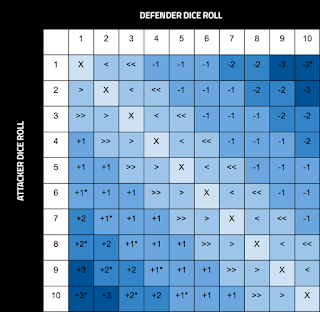 |
| images from uk.pinterest.com |
Having talked about Factions and Managing Energy in Project Out Of Time, it's time to look at some combat!
For me, Melee combat rules for a game are pretty much the linchpin – even more so when it comes to writing my own rules. If I don't get excited at the prospect of a good old face to face scrap then (in the absence of something else stunning) I'm likely to lose interest quite quickly. As a consequence, compiling mechanics for melee combat has been the sticking point for all of my attempts at rule writing. In the five or so years I've been attempting to create something solid I've looked at pretty much every example I can get my hands on (for free at least).
 |
| images from uk.pinterest.com |
I've been searching for a solution that was simple, allowed both players to be involved and reflected the individual ability/physicality of the game characters taking part in the fight. I also like the idea that melee combat is not risk-free and that there could be consequences for rolling badly.
Up until now my ideas have been logical (to me at least) but clunky and not overly fun. I've looked at everything from rolling target numbers, adding stats to dice rolls, rolling dice with different number of sides. I got quite caught up with a rock/paper/scissors approach, where each melee attack choice had a natural counter. Problem was that three options wasn't enough choice and five or six became unwieldy and messy.
My quest for the holy grail of fighting rules has stressed my brain for the longest time, the answer sitting just out of reach and elusive in the corners of my mind. However, I do feel that perhaps with this project I have taken a positive step in the right direction. See what you think...
++++++
The table below shows the outcome of the fight from the attacker's perspective. Any + damage is inflicted onto the defender, but – damage is taken by the attacker. The forward arrows >> represent the defender being pushed back and subsequently backward arrows << is the attacker being pushed back. X, of course is a neutral 'no result' outcome as the combatants fight to a stalemate.
There are a few asterisks in there (*) and these could represent additional effects inflicted by certain weapons or abilities. I like the idea that the middle ground can be influenced by gear or skills, and a combatant can change the outcome of a fight in their favour in some way, like action tokens in X-Wing or the character damage chart in Wrath of Kings.
 |
| Melee outcomes based upon a D10 opposed roll |
You will also see from the table that the results are split 50:50 between attacker and defender which seems the right way if all variables are equal and it's a level playing field. It doesn't take into account individual ability, however, so more skilled characters would roll multiple dice and choose the highest result.
 |
| images from uk.pinterest.com |
The alternative approach to the skill level issue is to have the different levels always roll the same number of dice, regardless of their opponent. Recruits always roll one dice, Grunts always two and Veterans three. This would mean that a Veteran vs Veteran fight would have both combatants rolling three dice each. The implication here is that fights between Veterans would have less extreme outcomes as it's more unlikely a player would roll triple 1 or 2. I like the idea of this in principle as better trained soldiers are less likely to make big mistakes. The only downside that I can see is that these fights might be a little dull as each character effectively neutralises the other, rolling so many dice.
Having support from friendlies (or being outnumbered) also needs to be added into the mix, but it is yet to be determined what form this will take – simply adding more and more dice to the mix will only work to a point – much more play tests needed first. There must be a way for the lower level characters to take down a Veteran by outnumbering. It may be as straightforward as adding +1 to dice rolls for every friendly character in support - with a maximum of 5 friendly characters on the board at any one time this is unlikely to get out of hand, yet could be very decisive.
These melee rules are still very theoretical at present. Minimal play testing has been done so far (due to lack of spare time) but I'm loving the creative thinking and problem solving aspects, albeit just on paper.
More soon!!